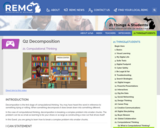
Students learn how to break down problems using decomposition
- Subject:
- Education
- Educational Technology
- Material Type:
- Activity/Lab
- Provider:
- REMC Association of Michigan
- Provider Set:
- 21 Things 4 Students
- Date Added:
- 08/03/2021

Students learn how to break down problems using decomposition

Create your own shapes using colorful blocks and explore the relationship between perimeter and area. Compare the area and perimeter of two shapes side-by-side. Challenge yourself in the game screen to build shapes or find the area of funky figures. Try to collect lots of stars!
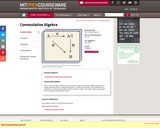
In this course students will learn about Noetherian rings and modules, Hilbert basis theorem, Cayley-Hamilton theorem, integral dependence, Noether normalization, the Nullstellensatz, localization, primary decomposition, DVRs, filtrations, length, Artin rings, Hilbert polynomials, tensor products, and dimension theory.

The Starfall Compose & Decompose numbers game is a great option for practicing adding, place value for ones and tens, and number identification in a steady, consistent format. This game is a great option for independent center practice, whole group instruction or small group instruction.
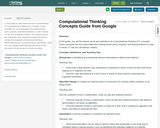
In this guide you will find eleven terms and definitions for Computational Thinking (CT) concepts. These concepts can be incorporated into existing lesson plans, projects, and demonstrations in order to infuse CT into any disciplinary subject.
The original copy of this information was created by Google and shared at https://docs.google.com/document/d/1i0wg-BMG3TdwsShAyH_0Z1xpFnpVcMvpYJceHGWex_c/edit. The only change made has been the format of the document. All information is exactly the same.
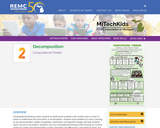
Decomposition one of the four parts of Computational Thinking breaks down problems into smaller parts so that it is easier to understand and solve them.
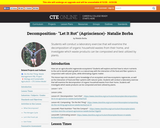
Students will conduct a laboratory exercise that will examine the decomposition of organic household wastes from their home, and investigate which waste products can be composted and best utilized by plants.

Students use decomposition to collect data and learn multiple ways to visually represent the data they collect.
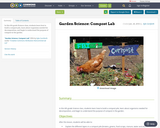
In this 6th grade Science class, students learn how to build a compost pile, learn about organisms needed for decomposition, and begin to understand the purpose of compost in the garden.

Students learn about energy and nutrient flow in various biosphere climates and environments. They learn about herbivores, carnivores, omnivores, food chains and food webs, seeing the interdependence between producers, consumers and decomposers. Students are introduced to the roles of the hydrologic (water), carbon, and nitrogen cycles in sustaining the worlds' ecosystems so living organisms survive. This lesson is part of a series of six lessons in which students use their growing understanding of various environments and the engineering design process, to design and create their own model biodome ecosystems.

Students investigate what types of materials biodegrade in the soil, and learn what happens to their trash after they throw it away. The concepts of landfills and compost piles will be explained, and the students will have an opportunity to create their own miniature landfill in which the difference between organic and inorganic waste will become clear.